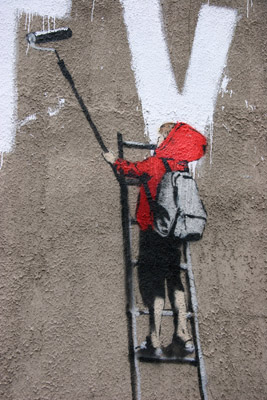I just trolled the net and found these culture jam examples.
Just so you all get a better idea of exactly the types of jams that happen and to what extent they deconstruct an existing advertisement and implant a new meaning with the same media tools.
Most of these are American ads – Walmart and Calvin Klein.
One theme targeted often is portraying realities where people are imperfect and “obsessed” to look as good as the figure on the ad.
I particularly like the ‘branded baby’, highlighting from the moment we are born, we exist in a world of brands and products and those are what identify us as a person.










HA ha ah Ash, I love these ads it is funny, because until you situate them in this kind of setting you simply push them aside as just another ad that you see amongst the millions we absorb on a daily basis. I to like the image of the baby… and it is soo true. From the moment we are born we are branded! Cant wait to read more!
Xx
I too never really thought about them all that much and categorized them with all of the other ads that I see. They are very clever if you take the time to look at them. I too can’t wait to read more.
Exactly. You giggle at them if you see one every once in a while, but until you see different examples on one plate – it shows the variance and creativity of culture jammer’s in the act of ad reconstructuring. As well as how so many jams exist out there, but we’re not really aware of in our long term memory. I think this might be a point I will look into exactly why this is.
And again with the baby, it’s tells us directly, from the moment we are born, we define ourselves/our identity derives from the products and brands we associate ourselves with. These brands are what convey a certain lifestyle that we all want to aspire towards. And most the time, the perceived lifestyle we want, really isn’t what we’re supporting (with our purchases). Take for example, buying a band shirt we buy from the markets – profits going to china, not the actual band/label. This plays on the “China Direct/Walmart” example pictured in this entry.
I completely agree with your comment regarding the baby Ad. Unfortunately, we exist in a world where we are exposed to thousands of different ads each day. I think you choose the pictures quite well, each demonstrated and strengthen your argument. I especially like the ‘China Direct’ Ad, that illustrates that despite brand names, a majority of companies manufacture in China for cheap labour. Also, I like the ‘Obsession for men’ Ad because it successfully demonstrates how being brand-conscious can have many negative effects and make people feel negative about their appearance and image.
It strikes me these Culture Jam ads might stem from a realization that it is easier to make a point to people, or get people involved, if you can have a bit of fun and poke a bit of black humour sarcastic fun at modern trends.
I particularly like the branded baby and the China direct ad, with the Western kids walking into the store. Do we think of where our clothes are coming from when we walk up to a store?
Grish
Grish – I highlight your last sentence in my new blog entry. Have a read. I strongly believe consumers don’t think about where a product comes from at all. They are more so interested with how the product benefits them. https://ashleighjsmith.wordpress.com/2010/09/04/informed-or-idiot-consumer/
Just off topic a bit here, but leading on from Grish’s comment about “Do we think of where our clothes are coming from when we walk up to a store?”
Do we realize how many handmade and manufacturing skills are being lost by society due to mass production of products using machinery? Handmade items and traditional products are being lost within this consumerism society. Such items take time to make and even though they are unique they cost more than mass produced products which deter consumers away as they continuously chose price over quality.
Society is becoming monotonous; there is no variety, no individuality. For instance, toys these days are made from cheap plastic materials (to increase profit for the business’ that produce them) which easily break, as oppose to the hardy handcrafted toys which would last generations and become heirlooms. What is this teaching the next generations? Children are growing up believing everything is easily replicable and not putting any value into what they own. “Easy come, easy go” as my mum says is the mentality of most.
Also, the ease at which these toys are produced and broke is filling up our landfills. Is anyone thinking about where these products go after you discard them? It is easy to underestimate to totality of the situation. So when these businesses claim that they are “efficient” is this really the case? Or does it just all catch up to us at the end with the expense of our environment at stake?
[…] The busiest day of the year was September 5th with 33 views. The most popular post that day was A picture is worth…. […]